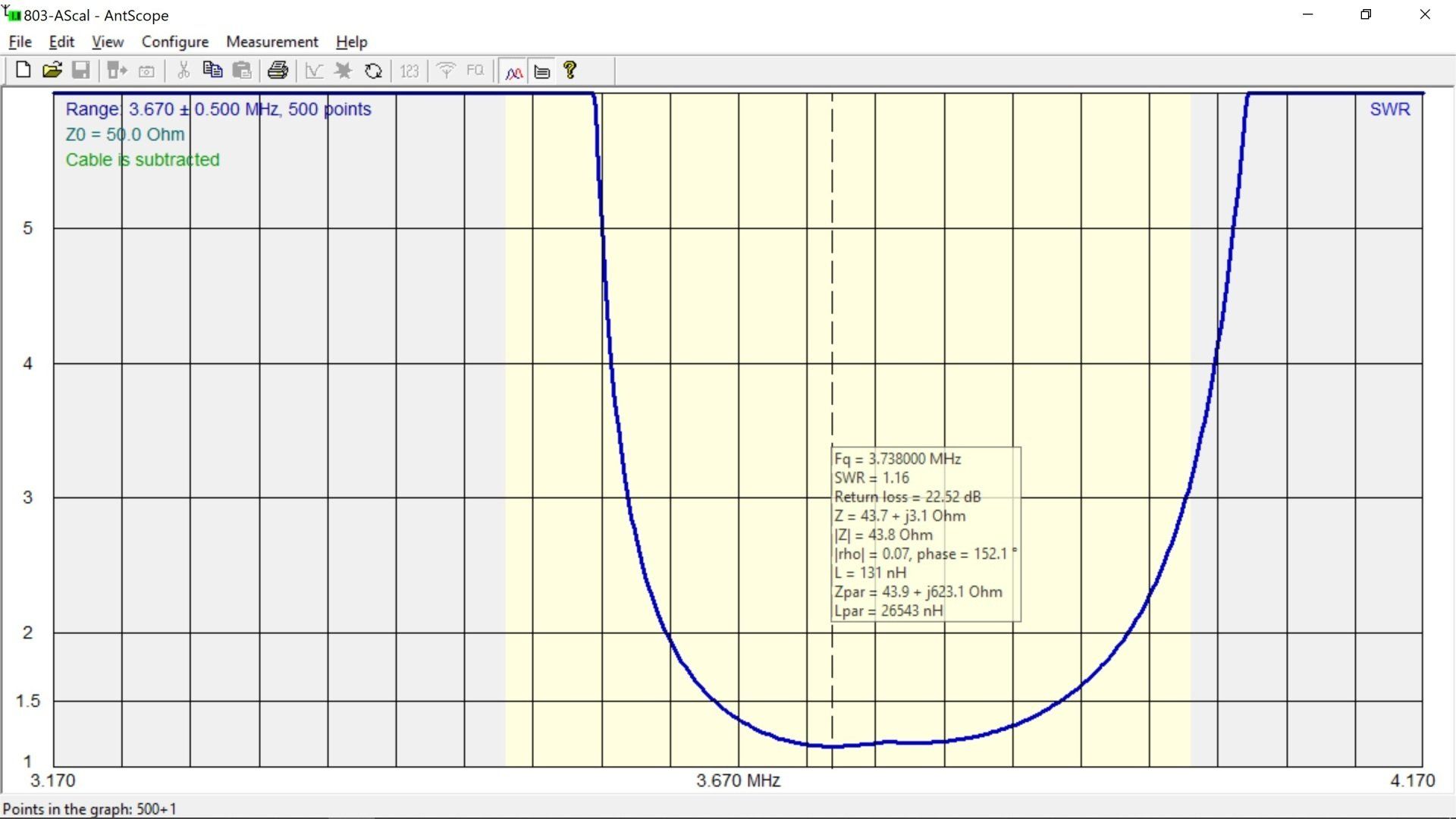Non-Calibrated VS. Calibrated (CAL) Mode

LOAD = ANT'

N/A
Measured at the Load

Scan initiated from the analyzer.
No connection to the computer.
CAL: OFF
Measure with 18m of Coax

Scan initiated from the analyzer.
USB connection to the computer.
CAL: ON
Measured with 18m of Coax

Scan initiated from the analyzer. USB connection to the computer.
In scan "802" above, we see that adding 18 meters of RG-174 coax cable skewed the level of SWR a little (0.1), but skewed the frequency of minimum SWR (SWRmin) 52 kHz up the band.
With the analyzer calibrated at the end of the RG-174 cable, the curve (803) is much closer to that of the original curve (801) which was measured without an extension coax.
The graphs below show the original (801) and the measurement with the extension coax (802). I do not show the curve with the CAL measurement (803) because AntScope does not import the calibrated data. It imports the uncalibrated data. Thus the curve is identical to 802.

This is measured with the analyzer connected directly to ANT'.

This is measured with an 18 meter long extension cable of RG-174.
In the next step, I used AntScope-2 to calibrate the analyzer at the end of the coax. Then I applied the adjustments to the graph.

This is the result I got. SWRmin is 1.16 at 3.742 kHz, which is WAY off from what it should be.

As a sanity check, I exported the data from the graph on the left to a CSV file. Then I opened AntScope-1 (the original AntScope) and imported the CSV file. It seems to be an SWR of 1.16 at 3.738 MHz.
Note: SWRmin was found on both of these graphs manually by running the cursor along the horizontal axis with the mouse. Obviously it might be slightly off. Never-the-less, the results are very strange indeed!
Finally, I used the Subtract known coax method, selecting the coax type in the setup of AntScope. I do not know the manufacturer of my RG-174 coax. The supplier only claims it is made in Europe. I used the characteristics of Belden RG-174 coax. This should at least be close.
Data Entry: they have a space to enter the length of coax, but do not say whether to enter it in meters or feet. So I tried both. The results are shown below.
This is the result I got using "subtract coax" when I entered 59 feet:

The frequency of minimum SWR is close to the measurement in 801 (3658) but the level of SWR is much higher . . . almost 3:1.
This is the result I got using "subtract coax" when I entered 18 meters:

Here the level of SWR is close to the measurement in 801, but the frequency of minimum SWR is 40 kHz lower.
THE BOTTOM LINE:
The "subtract coax" method seems to be worthless... of course I may be doing something wrong.
Calibrating the analyzer at the end of the coax seems quite accurate, but there is no way to import this data into AntScope.
Calibrating the end of the coax using AntScope enables saving the data in AntScope and viewing it either with CAL values applied or not, but it is only close, not accurate.
